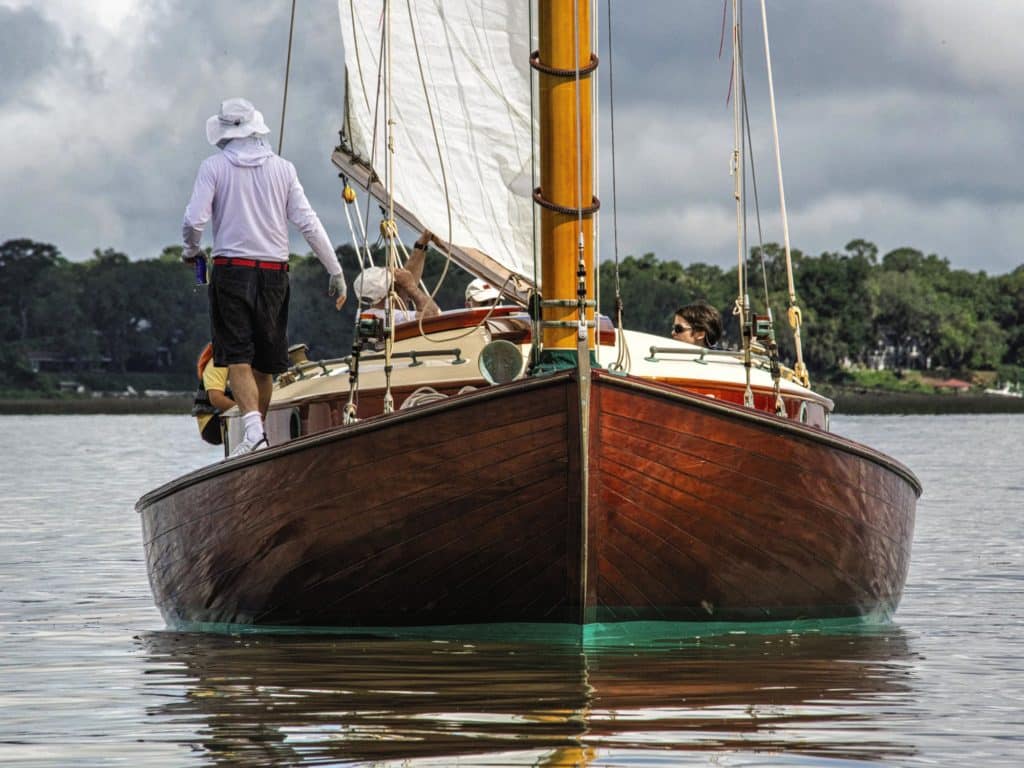
Well below the Mason-Dixon Line, the Lowcountry of South Carolina and the rivers surrounding Savannah, Georgia, provide unique and interesting cruising for sailors. The waterways are vast, with historic towns and vibrant life along them. Right from the beginning of a cruise, one learns that people in this part of the country know how to enjoy life.
Just before summer arrived, I was able to join three other crew aboard a 33-foot catboat for a four-day cruise that started in Savannah and then meandered through the Lowcountry’s endless rivers and bays, with a stop in Hilton Head and the final port of Beaufort. We were joined by three other catboats for the Catboat Rally that happens every spring. This year, each boat flew a Ukrainian flag from the leech of the mainsail in a show of support for the country at war with Russia, lending this year’s rally a little extra purpose.
The atmosphere was relaxed around the docks, though it was clear from the start that the racing triggered everyone’s competitive instinct. With the race committee employing a pursuit starting sequence—where the smaller or lower-handicap boats start first, and the bigger boats with higher ratings wait to start until the early starters’ time allowance has passed—it made for some anxious moments before the small catboats sailed off into the distance. From the second the first boat crossed the starting line, an official on the radio continuously counted the minutes and seconds until the next boat could start.
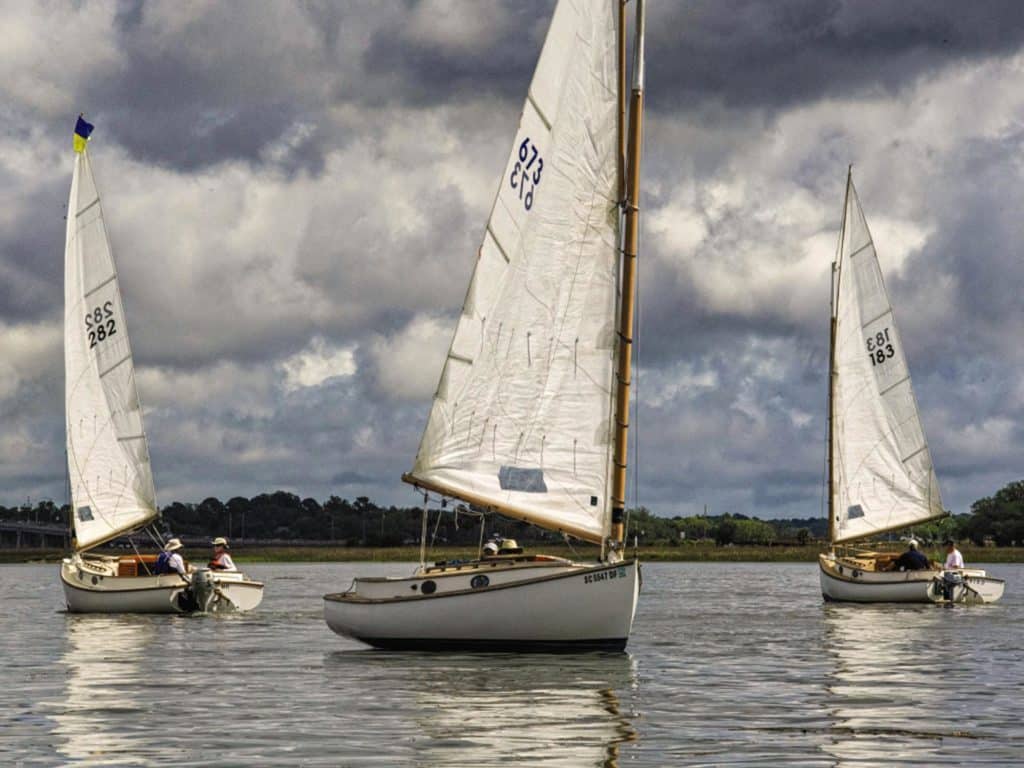
There was an interesting contrast between the racing on the water and the camaraderie on shore. My time ashore began at the Savannah Yacht Club, where I smiled at photos of native son Ted Turner’s yachts gracing the walls. It was here that Turner learned to sail shortly after World War II. The yacht club is a few miles east of the historic city, which we found to be bustling on the Wednesday night before our departure. Savannah was a target of General William Tecumseh Sherman at the end of the Civil War, which is more commonly known here as “The War Between the States.” When Sherman arrived in December 1864, a group of city elders met the army at the city’s outer border. They offered to surrender, and provide hospitality and safe passage, if the city was spared from ruin. The Yankee army agreed, which is why many of the historic buildings we see today remain intact. Interestingly, Sherman’s nephew, C. Sherman Hoyt, was the heroic tactician aboard the J Class sloop Rainbow, which overcame a two-race deficit to successfully defend the America’s Cup in 1934.
Savannah is a coastal gem made for walking. Cruisers who drop a hook here are rewarded with an endless array of charming shops, restaurants and bars along the waterfront. A walking trail winds around 22 beautifully landscaped gardens. (For any mariners considering a stopover in Savannah, I highly recommend reading John Berendt’s bestselling novel Midnight in the Garden of Good and Evil before you arrive.)
The Savannah River separates Georgia and South Carolina, and the amount of commercial shipping traffic on the river is staggering. Our fleet of catboats kept to the smaller estuaries; our boat had a centerboard, which served as a convenient fathometer. We bumped along the sandy riverbed a few times, but the board simply raised up, and we continued on our way. One boat’s crew was comprised of three brothers, all in their 70s. They hadn’t raced together in decades, but they had trailered their boat from Cape Cod, Massachusetts, for the rally. After a slow start, they determined that they had too much weight on board, so they unloaded buckets of gear, which happily improved their speed.
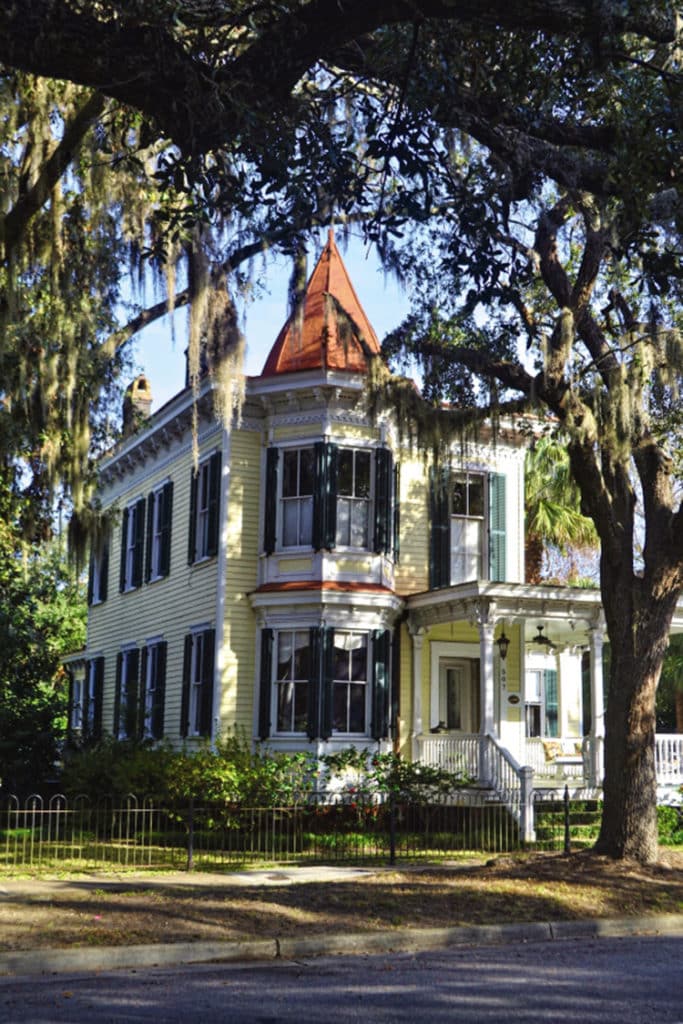
We managed to sail the whole race without firing up an engine. The magnificent quiet of sailing can inspire a crew to talk more about their surroundings, careers, families and life philosophies, which ours covered extensively over four days of cruising. Throughout the contest, a small powerboat served a dual role as race-committee boat and escort vessel. The committee set a course about 10 miles long each day, and the rally chair, Sam “Woody” Norwood—a founder of the Catboat Rally—served as an enthusiastic leader in the event’s 16th year.
Catboats are special craft. They are easily propelled by one large sail, maneuver efficiently, and are surprisingly fast. As we tracked along our course, the locals seemed intrigued by these handsome boats, which ranged from a Marshall 18 to a couple of custom builds and a 33-footer with a recognizable name: Silent Maid. All four of our catboats had gaff rigs. In light winds, the extra sail area is a bonus. Although there is only one sail, the mainsail can be a handful in a breeze. Jibes need to be made with great care.
Tidal currents can be swift along the Lowcountry. I was constantly amazed at how the direction of the current would change as we transited from one river to another. For a few hours, we might be sailing against a flooding current, and then, magically, sail around a bend and be speeding along with the boost of a 2-knot favorable current.
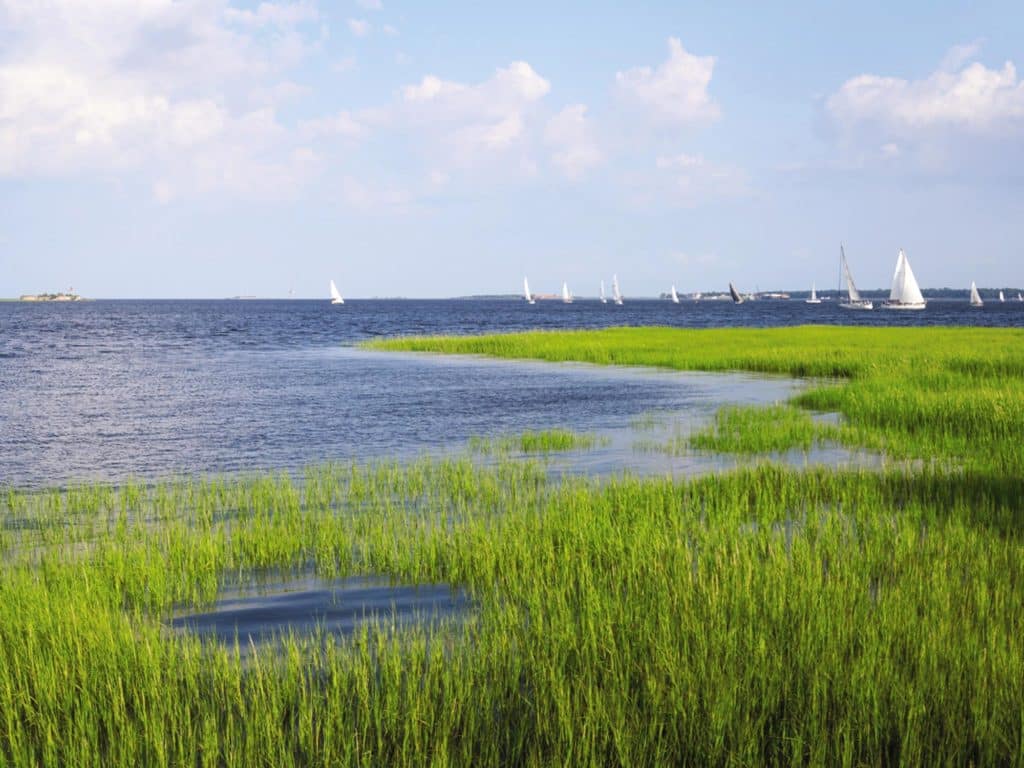
All the while, the view was intriguing. The Lowcountry has a lot of sand and marshland, with lush vegetation in abundance along the riverbanks. The watery landmass almost seems to be held together by seagrass. A large portion of the land is designated as a wildlife refuge; we constantly noticed fish popping on the surface, dolphins playing, and dozens of species of birds circling our boat. Perhaps they related the shape of our mainsail to the shape of their wings. We still noticed plenty of evidence of industry, which is also abundant in this part of the country, but most of the shoreline presented native plants that thrive in brackish waters. Such close proximity to nature, along with the omnipresent quiet, soothed the soul.
Aboard Silent Maid we sailed with four crew, who took turns at the helm during each leg. I spent a lot of time reading the wind that often seemed to be blowing above the water, but with high banks, there were few ripples to judge wind velocity and direction, which sailors can normally see on the water. Instead, we learned to sense the wind by looking at the shore—the trees, smoke billowing from stacks, and flag direction, in particular. (I should add there were a lot of flags flying in the Lowcountry.) As tactician, my job was to find the best wind and use it to gain on the smaller boats.
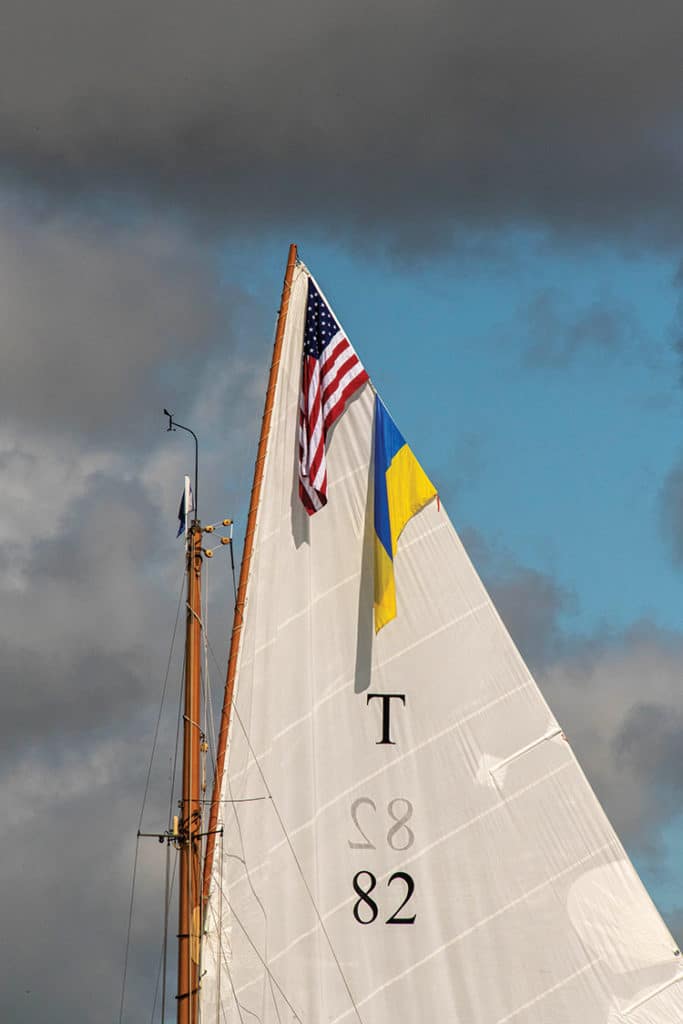
The most exciting moments along the way were anytime we caught up to a rival. Instinctively, the competitive spirit kicked in, and every crewmember on each catboat seemed to work a little harder trimming, moving crew weight, and steering to hold or gain the lead. And there was little conversation between the boats, even when sailing within one boat length. It was a challenge catching up to the small catboats that disappeared around a few bends in the river. Our crew worked hard to gain distance on the leaders. It was never easy. In one race, all four boats were within a few boat lengths as we neared the finish line. It made for an exciting ending and an enthusiastic post-race cocktail party just across from the US Marine Corps training facility on Parris Island.
At night, several of the crews slept on their catboats, while others retired to nearby hotels. Nightly social functions added to the camaraderie. A speaker was recruited to entertain the sailors each evening. One night, the former four-time mayor of Beaufort regaled us with a story about the trauma of capsizing a dinghy when he was 12 years old. In an odd twist of fate, a few days after the rally, he capsized a catboat and needed to be rescued. It was a sobering reminder to be careful when sailing: Sudden gusts can appear without warning, especially on enclosed waters.
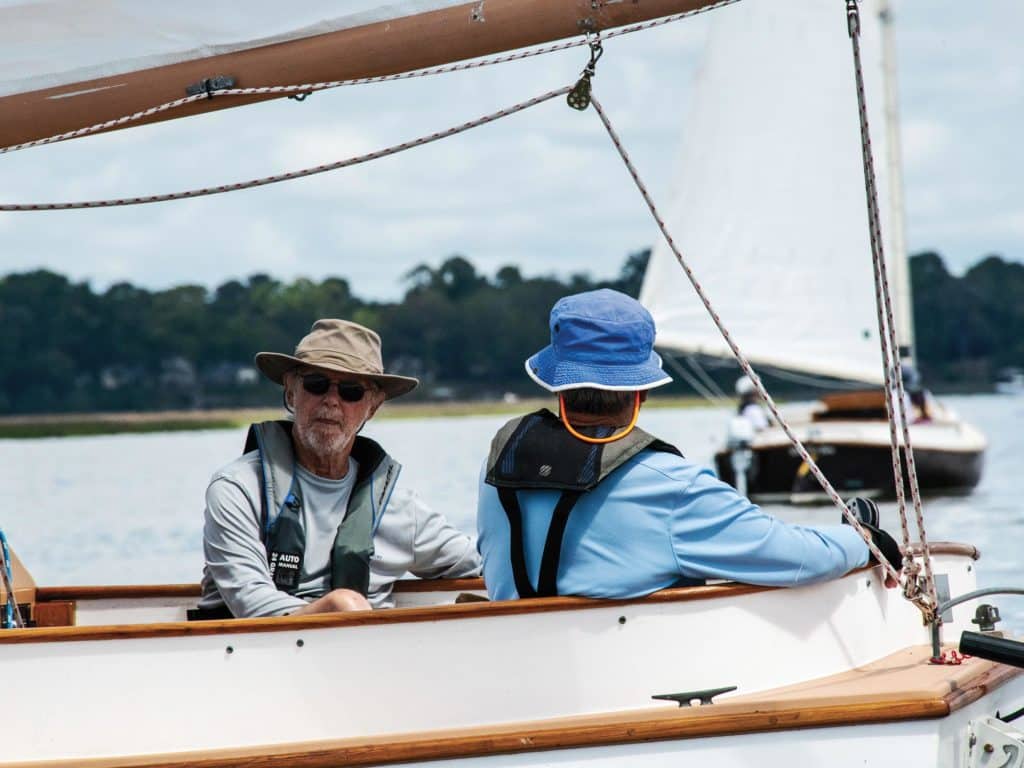
The rally course kept our fleet well off the ocean. Instead, we sailed along Fields Cut and a turtle wildlife refuge. Later, we sailed past Daufuskie Island, which apparently produces good rum. (There was a nice, familiar smell on the breeze.) Our second stop was the South Carolina Yacht Club in Hilton Head, where the members race Harbor 20s. Gaining access to the local marina is a charming process via a lock where a handful of small craft can squeeze together to fit. On the other side, a crowd of locals had gathered to welcome us to the island, which sports multiple golf courses, expansive beaches, and plenty to keep transient cruisers busy.
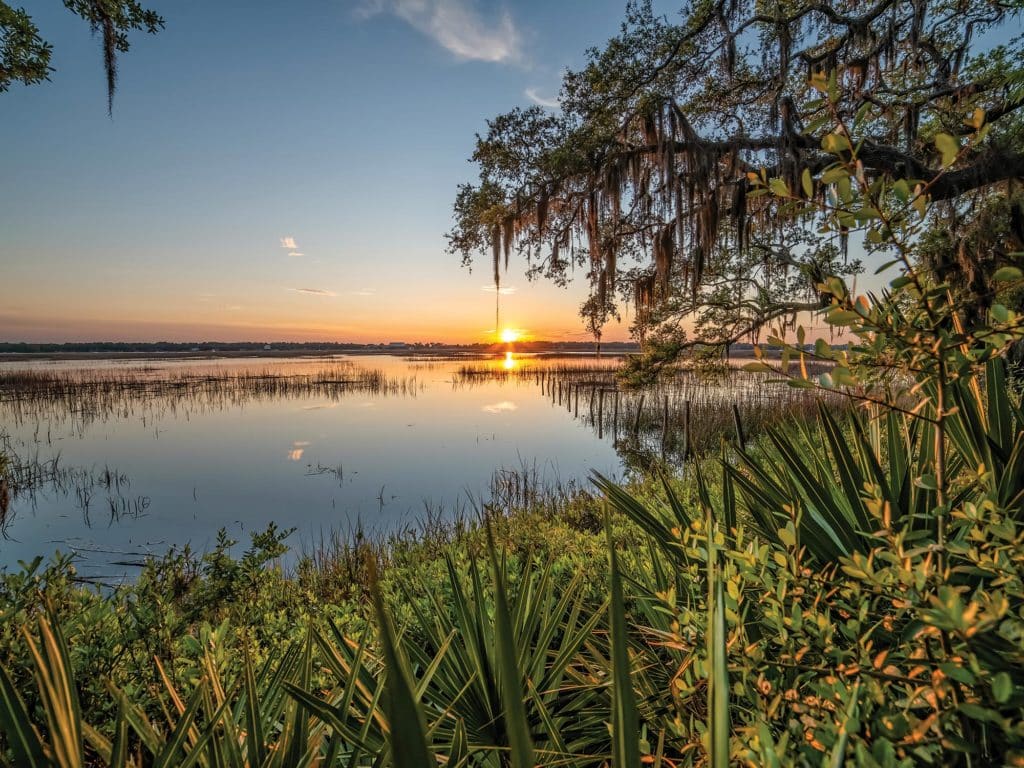
After an overnight in Hilton Head, the rally continued north on Skull Creek, which connects to the Chechessee River. We enjoyed sailing the 6 miles across Port Royal Sound to the southern tip of Parris Island in a fresh breeze. There was little evidence of military activity; rather, the shoreline was ripe with vegetation just like the other waterways we had put in our wake.
On the final stretch, we sailed north on Cowen Reach and the Beaufort River toward Beaufort, a quaint old town with delightful shops, eateries and distinctive architecture. The tidal current was strong as we neared the finish line. Silent Maid took second in this race, after winning the other three, and our crew cheered for the winner on his Marshall 18. There was no discontent among the four competing crews. The real prize in this race was having the opportunity to navigate through such a special part of America.
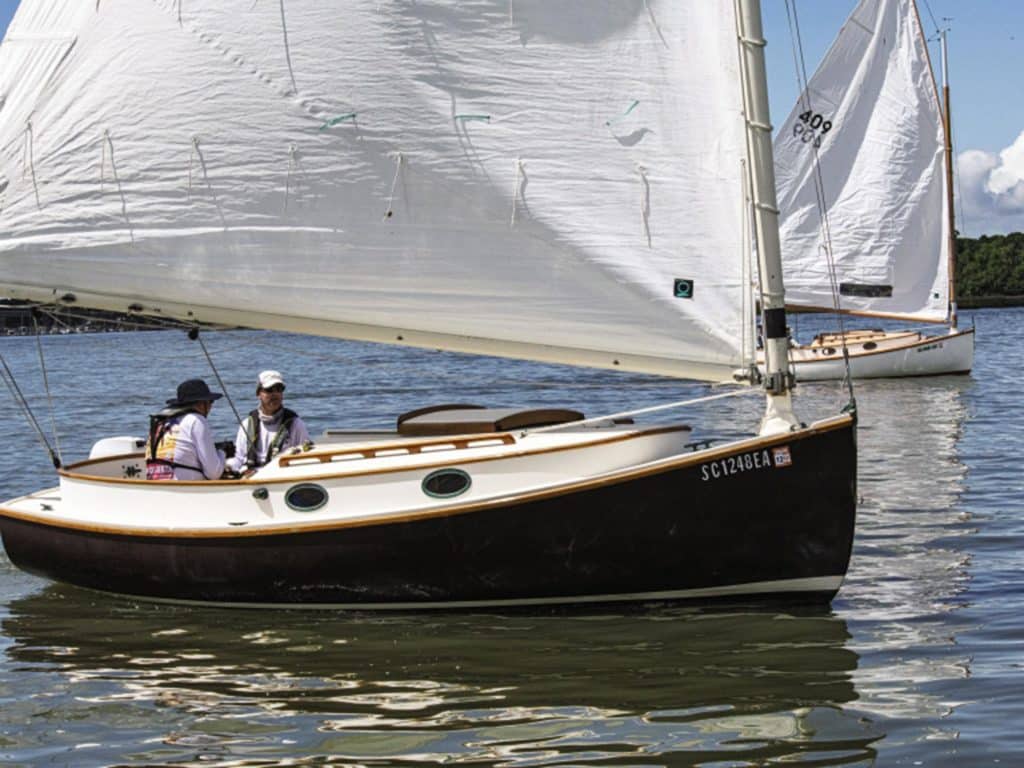
The total cruise was approximately 42 miles as the crow flies, but longer when you count all the bends and curves in the rivers. Yearning for more, we planned an extra day of racing in Beaufort with a local fleet of 10 catboats, though it was not to be. Not a breath of wind appeared. No matter; at the post-rally dinner, the talk centered on returning next year anyway.
CW editor-at-large Gary Jobson is a Hall of Fame sailor, television commentator and award-winning author based in Annapolis, Maryland.








